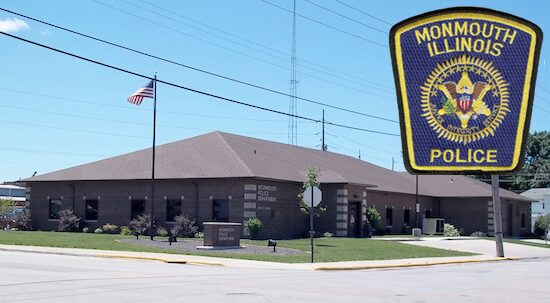The unemployment rate decreased in all fourteen Illinois metropolitan areas compared to last August, according to preliminary data released today by the U.S. Bureau of Labor Statistics (BLS) and the Illinois Department of Employment Security (IDES). Data also shows the number of nonfarm jobs increased in twelve Illinois metropolitan areas and decreased in two.
“Illinois has a bright future for residents and businesses, and we’re building an economy that works for everyone throughout the state,” said Deputy Governor Dan Hynes. “The Pritzker administration continues to build on these recent gains with the state’s first bipartisan balanced budget in years and the historic Rebuild Illinois capital bill that together make long-term investments in our small businesses, schools and infrastructure.”
Illinois businesses added jobs in twelve metro areas, with the largest percentage increases in: Carbondale-Marion (+2.6%, +1,500), Danville (+2.6%, +700), and Champaign-Urbana (+2.5%, +2,600). The Chicago-Naperville-Arlington Heights metro division was up (+0.9% or +34,000). The two metro areas showing an over-the-year decrease in total nonfarm jobs were Kankakee (-1.1%, -500) and Peoria (-0.3%, -500).
The industry sectors recording job growth in the majority of metro areas included Leisure and Hospitality (10 of 14), Government (10 of 14), Mining and Construction (9 of 14), Manufacturing (8 of 14) and Professional and Business Services (8 of 14).
Not seasonally adjusted data compares August 2019 with August 2018. The not seasonally adjusted Illinois rate was 3.8 percent in August 2019 and stood at 12.2 percent at its peak in this economic cycle in January 2010. Nationally, the not seasonally adjusted unemployment rate was 3.8 percent in August 2019 and 10.6 percent in January 2010 at its peak. The unemployment rate identifies those who are out of work and looking for work and is not tied to collecting unemployment insurance benefits.
Not Seasonally Adjusted Unemployment Rates
| Metropolitan Area | August 2019 | August 2018 | Over-the-Year Change |
| Bloomington | 3.6% | 4.4% | -0.8 |
| Carbondale-Marion | 3.8% | 5.2% | -1.4 |
| Champaign-Urbana | 3.7% | 4.8% | -1.1 |
| Chicago-Naperville-Arlington Heights | 3.6% | 3.9% | -0.3 |
| Danville | 5.2% | 6.5% | -1.3 |
| Davenport-Moline-Rock Island, IA-IL | 3.8% | 4.0% | -0.2 |
| Decatur | 5.0% | 5.8% | -0.8 |
| Elgin | 3.7% | 4.7% | -1.0 |
| Kankakee | 4.3% | 5.3% | -1.0 |
| Lake-Kenosha, IL-WI | 3.6% | 4.3% | -0.7 |
| Peoria | 4.3% | 5.1% | -0.8 |
| Rockford | 5.5% | 5.6% | -0.1 |
| Springfield | 3.5% | 4.4% | -0.9 |
| St. Louis (IL-Section) | 3.8% | 4.8% | -1.0 |
| Illinois Statewide | 3.8% | 4.3% | -0.5 |
| * Data subject to revision. |
Total Nonfarm Jobs (Not Seasonally Adjusted) – August 2019
| Metropolitan Area | August 2019* | August 2018** | Over-the-Year Change |
| Bloomington MSA | 90,900 | 90,600 | 300 |
| Carbondale-Marion MSA | 58,200 | 56,700 | 1,500 |
| Champaign-Urbana MSA | 107,100 | 104,500 | 2,600 |
| Chicago-Naperville-Arlington Heights Metro Division | 3,846,000 | 3,812,000 | 34,000 |
| Danville MSA | 27,500 | 26,800 | 700 |
| Davenport-Moline-Rock Island MSA | 189,000 | 186,800 | 2,200 |
| Decatur MSA | 52,400 | 52,000 | 400 |
| Elgin Metro Division | 268,400 | 264,800 | 3,600 |
| Kankakee MSA | 46,000 | 46,500 | -500 |
| Lake-County-Kenosha County Metro Division | 435,700 | 426,700 | 9,000 |
| Peoria MSA | 176,800 | 177,300 | -500 |
| Rockford MSA | 154,000 | 153,100 | 900 |
| Springfield MSA | 118,700 | 117,300 | 1,400 |
| Illinois Section of St. Louis MSA | 243,200 | 240,500 | 2,700 |
| Illinois Statewide | 6,203,700 | 6,142,200 | 61,500 |
| *Preliminary **Revised |
Not Seasonally Adjusted Unemployment Rates (percent) for Local Counties and Areas
| Labor Market Area | Aug. 2019 | Aug. 2018 | Over-the-Year Change |
| Bloomington MSA | |||
| DeWitt County | 3.8% | 5.4% | -1.6 |
| McLean County | 3.6% | 4.4% | -0.8 |
| Peoria MSA | |||
| Marshall County | 3.9% | 4.9% | -1.0 |
| Peoria County | 4.7% | 5.5% | -0.8 |
| Stark County | 4.9% | 5.8% | -0.9 |
| Tazewell County | 4.0% | 4.8% | -0.8 |
| Woodford County | 3.4% | 4.0% | -0.6 |
| Ottawa-Streator Area | 4.3% | 5.4% | -1.1 |
| Bureau County | 3.9% | 4.8% | -0.9 |
| LaSalle County | 4.4% | 5.6% | -1.2 |
| Putnam County | 3.9% | 4.9% | -1.0 |
| Galesburg Area | 4.4% | 5.3% | -0.9 |
| Knox County | 4.4% | 5.3% | -0.9 |
| Warren County | 3.6% | 4.3% | -0.7 |
| Cities | |||
| Bloomington City | 3.7% | 4.6% | -0.9 |
| Galesburg City | 4.8% | 5.8% | -1.0 |
| Normal City | 3.3% | 4.2% | -0.9 |
| Pekin City | 4.6% | 5.4% | -0.8 |
| Peoria City | 5.0% | 5.8% | -0.8 |
| Counties | |||
| Fulton County | 5.0% | 6.1% | -1.1 |
| Henderson County | 4.6% | 5.0% | -0.4 |
| Henry County | 4.1% | 4.9% | -0.8 |
| Livingston County | 3.6% | 4.6% | -1.0 |
| Logan County | 4.1% | 4.8% | -0.7 |
| Mason County | 5.0% | 6.2% | -1.2 |
***Report Courtesy of the State of Illinois***















